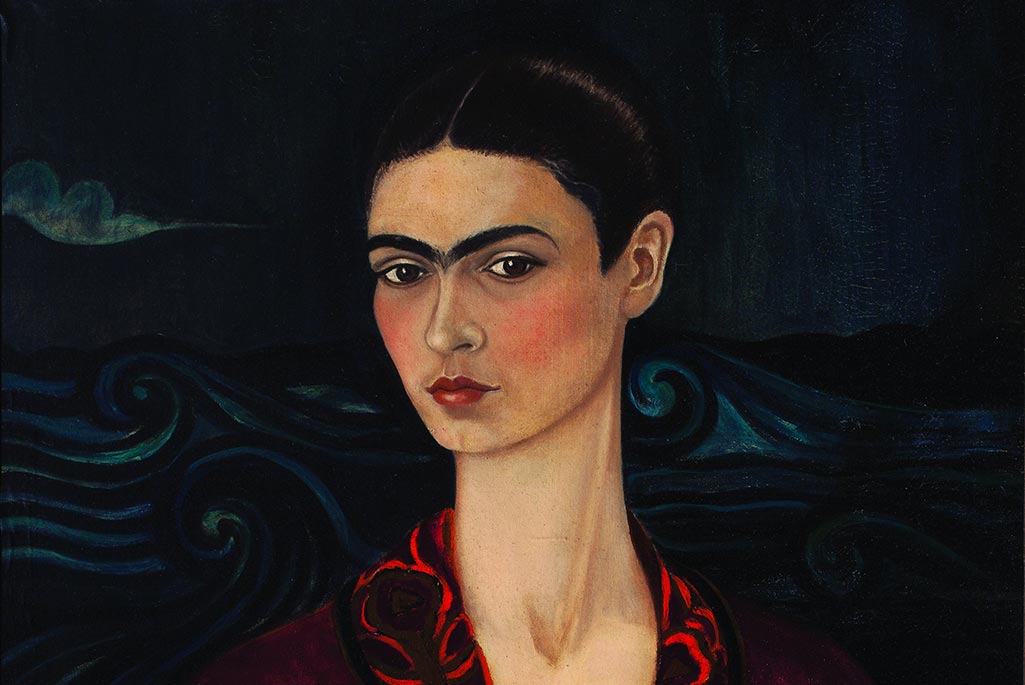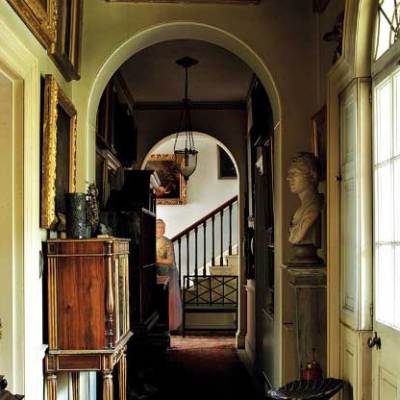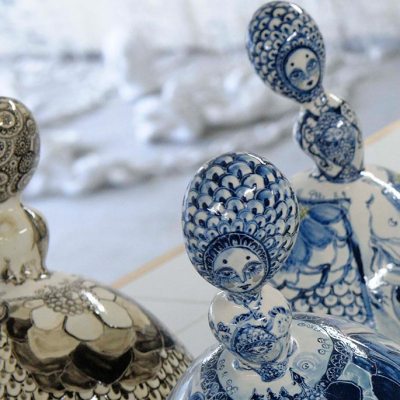Despite being one of the most important shows of the current Paris exhibition season, you’d be forgiven for thinking that ‘Frida Kahlo & Diego Rivera: L’Art en Fusion’ at the Musée de l’Orangerie was just another variant on an exhibition peddled around the world’s galleries to inject some revolutionary oomph.
Self-Portrait in a Velvet Dress (1926), Frida Kahlo Private collection © Photo Francisco Kochen / © ADAGP, Paris 2013

However, this so-called ‘fusion’ is rarely dared. The reality is that Kahlo and Rivera’s work just doesn’t sit happily together in an exhibition space – the ‘elephant and the dove’, as their relatives called them, are an uncomfortable duo. Rivera’s murals (to which the exhibition gives a particular focus) are unashamedly bombastic, expanding upon a revolutionary social consciousness whilst applying the fresco techniques of the Renaissance greats. Kahlo’s paintings are notoriously introspective, contracted into tiny, torturous anatomies of selfhood in a range of media that act as different implements of dissection.
There are individual Kahlo or Rivera retrospectives across the world: ARKEN in Denmark is currently exhibiting ‘Frida Kahlo: A Life in Art’, and North America in particular lauds Rivera. Group exhibitions abound, such as The Royal Academy’s recent ‘Mexico: A Revolution in Art, 1910–1940’. Indeed, while 2012 seemed all about Brazilian art, 2013 definitely tends towards Mexicana. The Art Gallery of Ontario recently presented ‘Frida & Diego: Passion, Politics and Painting’, but in France the last significant exhibition to focus on the work of the two artists was 15 years ago at Paris’ Musée Maillol.
‘L’Art en Fusion’ is based primarily on a loan from the Dolores Olmedo Museum in Mexico, which will in turn exhibit 30 impressionist and modernist works from the Orangerie’s collection. A Mexican businesswoman, musician and collector, Dolores Olmedo was a great admirer of Rivera’s work: on his advice, she grudgingly acquired 30 or so of Kahlo’s paintings.
El Rastro (1915), Diego Rivera © 2013 Banco de México Diego Rivera Frida Kahlo Museums Trust, Mexico, D.F. / ADAGP, Paris

Paris has a complex relationship with the two artists. Although the exhibition starts with Rivera’s early cubist-inspired paintings from his time in Europe (1907–1921), it doesn’t shy away from Kahlo’s damning attitude towards the Parisian avant-garde. In 1939, Kahlo travelled to Paris to participate in what was to be her first exhibition abroad, as promised by André Breton whom she had met through Trotsky. Kahlo resented Breton’s attempts to harness her to the Surrealist movement: theirs was an art of dreams, whereas she painted her own reality.
Not one to mince her words, Kahlo wrote of Paris intellectuals: ‘They are so damn “intellectual” and rotten that I can’t stand them anymore… I [would] rather sit on the floor in the market of Toluca and sell tortillas, than have anything to do with those “artistic” bitches of Paris’. Nevertheless, Paris was one of the first countries to embrace Kahlo’s work; her self-portrait The Frame became the first work by a 20th-century Mexican artist to be purchased by the Louvre.
The exhibition panders to the couple’s cult status. The jauntily colourful walls adorned with aimless cacti are a vague homage to the legendary Blue House, and the room of archive material, though fascinating, is coyly announced by the iconic, frida-font sign: ‘Frida y Diego vivieron en esta casa 1929–1954’.
Self-portrait with a Wide-brimmed Hat (1907), Diego Rivera © 2013 Banco de México Diego Rivera Frida Kahlo Museums Trust, Mexico, D.F. / ADAGP, Paris

Certain curatorial decisions lay it on too thick, such as the presentation of Kahlo’s most psychologically invasive works, including My Nurse and I (1937) and The Broken Column (1944) in a central, shrine-like space symbolically enclosed by Rivera’s imposing portraits and mural designs. Tacked on to the end of the exhibition is a lime-green placard pasted with a few examples of contemporary ‘Fridamania’ in fashion and pop culture. The effect is about as superficial as the concept of ‘Fridamania’ itself.
However, there’s no denying the quality of the works on display and the historic value of the exhibition. This is a show that curates a collection for popular consumption rather than providing any ground-breaking interpretations. Yet it is no less compelling for that, and the works themselves shine through the kitsch.
‘Frida Kahlo & Diego Rivera: L’Art en Fusion’ is at the Musée de l’Orangerie until 13 January 2014



